We briefly talked about the 5 trends in office design in our first blog and today we’ll elaborate on one of the most relevant ones. Sustainability and Green living as a whole has been much talked about in recent times as people are becoming more aware and cautious regarding it. Architecture and interiors has had a major role to play in encouraging this trend by adapting it in design. While initially, the approach was more focussed on reducing the resource consumption through ratings and certifications on the basis of energy usage in a given environment, now it has evolved into a more detailed concept encompassing user wellness, employee satisfaction, enhanced productivity and even happiness.
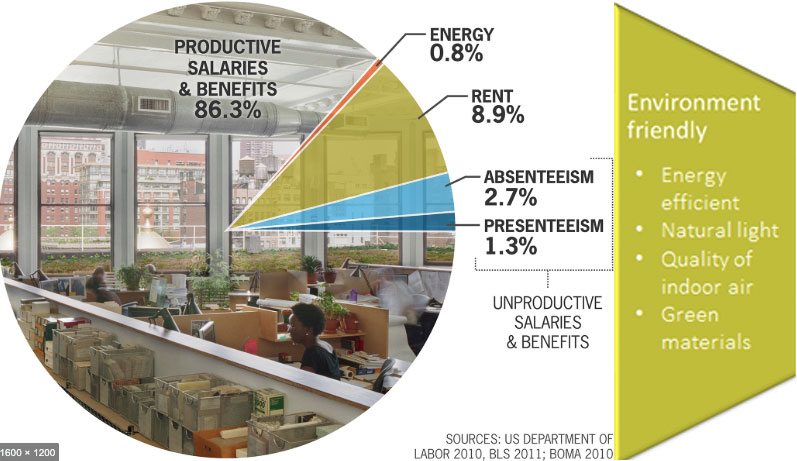
‘Biophilia’, a term first used in ‘The Anatomy of Human Destructiveness’ by the psychologist Erich Fromm in 1964, describes a love of life and living things, specifically the connection humans have with nature, and their inherent need to remain close to it. It is now generally associated with interior design.
Research shows that Biophilic design and a human-centred approach can improve our living and working environments with many benefits to our wellbeing, health and efficiency. In fact, employee absenteeism due to illness also reduces and even 1% reduction in absenteeism is equivalent to a saving of approximately £1 billion to the economy.
Harvard professor Edward O Wilson’s book ‘Biophilia’ says that working in more natural environments can allay negative emotions like aggression, anxiety, depression and stress, while helping us to feel calmer and be inspired.
In an office environment, it is essential to balance periods of intense work with moments of rest, tranquility and relaxation. Although resource reduction and energy efficiency should be integrated right from the beginning through building orientation, fenestration, insulation etc., it is equally important to design the interiors in terms of lighting, air-conditioning, ventilation, indoor air quality, materials etc.
 (Image Source: https://k2space.co.uk/knowledge/biophilic-office-design/a)
(Image Source: https://k2space.co.uk/knowledge/biophilic-office-design/a)
Good biophilic design facilitates the elements of air, light, and greenery into the office space. Broadly, we can categorize the steps to do so as follows:
Poor indoor air quality and airborne pollutants are a major factor in causing health problems ranging from mild breathing problems to even cancer. As we spend most of our waking hours in the office, the quality of the air we breathe must be taken seriously. Research has shown that surrounding a space with direct and indirect contact with nature enhances employee creativity, improves their well being by 15% and productivity by 6%. (Ewelina Solecka, Senior Workplace Research & Development Consultant at Nowy Styl Group.) Introducing plants to the office can lower feelings of tension and anxiety by around 37%. Plants not only helps to remove certain VOCs, CO2, particulate matter but also lower noise levels, reduce mold and catch dust.
Green living walls between workstations, vertical planters, windows lined with planters, outdoor terraces are some ways to refresh the environment and improve air quality. Some indoor plants which are highly beneficial are Philodendron Monstera, Tillandsia (‘Air Plant), Sansevieria (‘Snake Plant’), Zanzibar Gem (‘ZZ Plant’), Phlebodium Aureum (‘Blue Star Fern’),Osorum Diversifolium (‘Kangaroo Paw Fern’) and Dracaena Marginata (‘Colorama‘).
Greenery adds a pleasant and welcoming feel to the office, and even artificial plants can be beneficial to uplift mood and enhance concentration and calmness both.
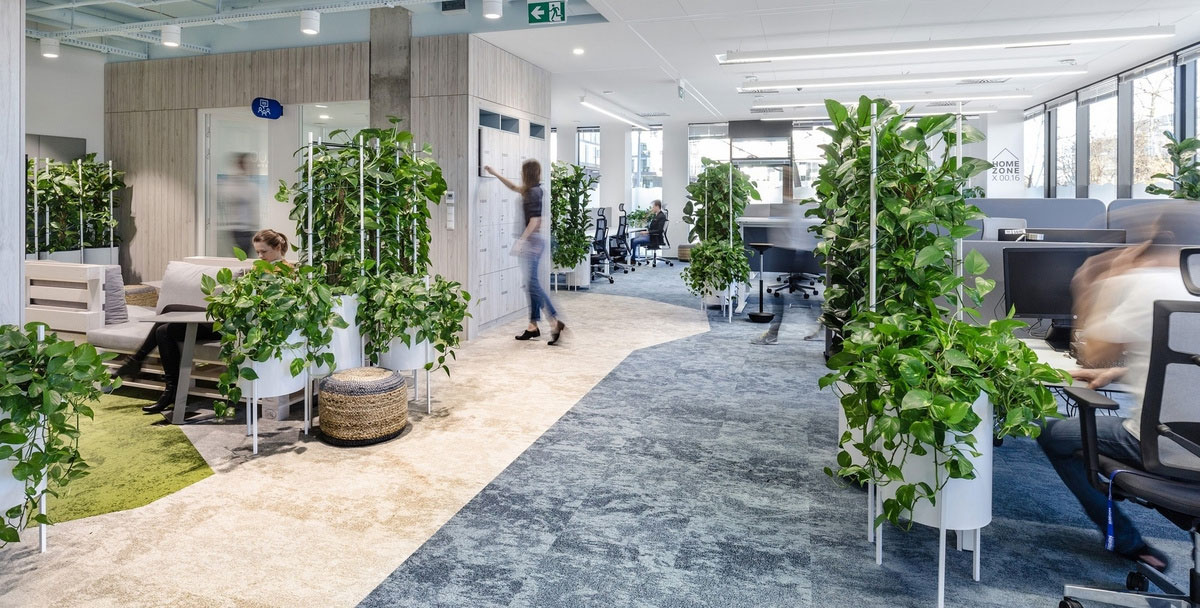 (Image Source: https://dfordesign.style/blog/the-biophilic-office-what-it-is-and-why-it-works)
(Image Source: https://dfordesign.style/blog/the-biophilic-office-what-it-is-and-why-it-works)
While too much artificial light in the workplace has been known to cause eye strain and an exhausted mind, sufficient natural light coming in has just the opposite effect - it refreshes the employees’ minds and brings positivity by connecting one’s mind with nature.
Arranging workstations closer to the windows, not fully covering the openings by blinds, having skylights at a few places if the design permits, having large windows with views to the outside are some ways to ensure that natural light flows in.
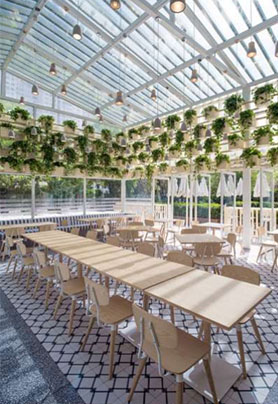
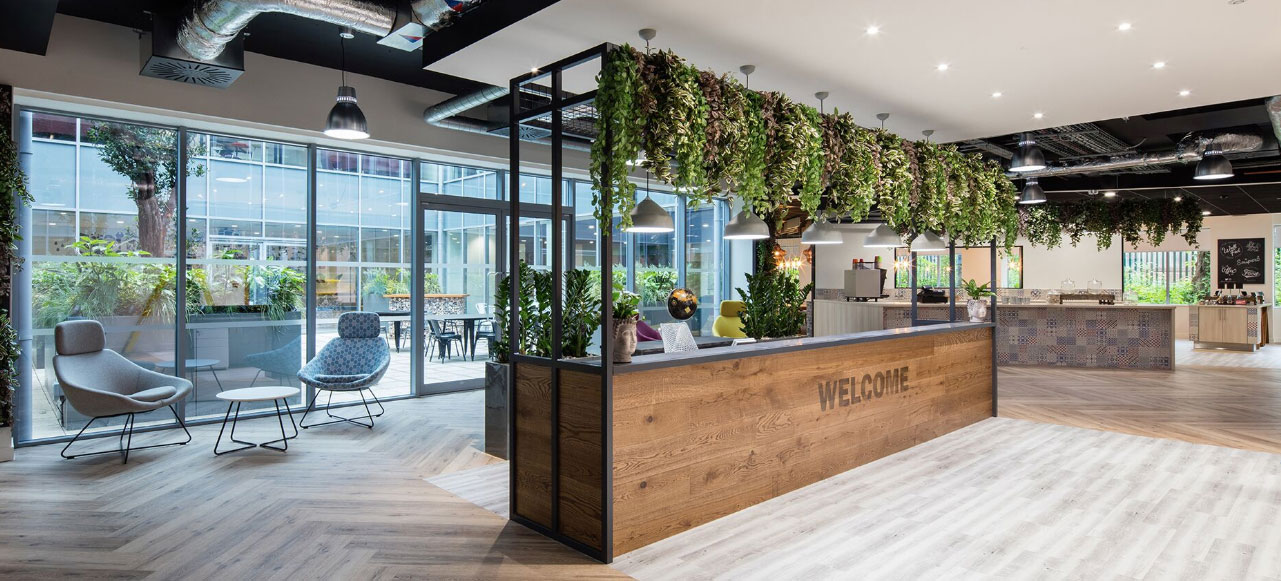
Incorporating natural materials, patterns, shapes and colours found in nature through furniture, artwork and decor in the office environment is another way of boosting employee morale and well being. A few ways to achieve this is by using:
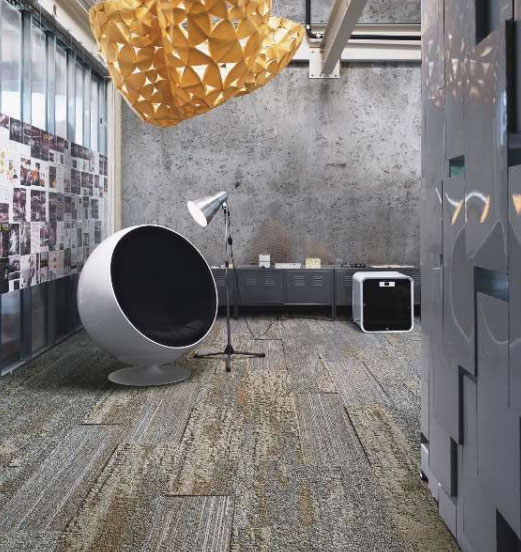

A non-visual connection means besides having a visual link with nature, one can also have auditory and olfactory cues integrated in the design which evoke a sense of nature. Such a space would feel refreshing, pleasantly comfortable and well balanced.
Exposure to sounds of nature such as birdsong or sound of the oceans, or digital simulations of such sounds has been found to reduce fatigue and increase energy and motivation levels. Sound of a water body, even if not in visual but only in auditory range, is soothing to the ears.
Olfactory or the sense of smell also aids biophilic design - by using mechanically released natural plant oils in the workplace, a positive and calming effect is ensured.
Somatosensation or the act of touching plants or raw materials like textured natural wood or stone also induces relaxation through a change in heart and blood flow rate.
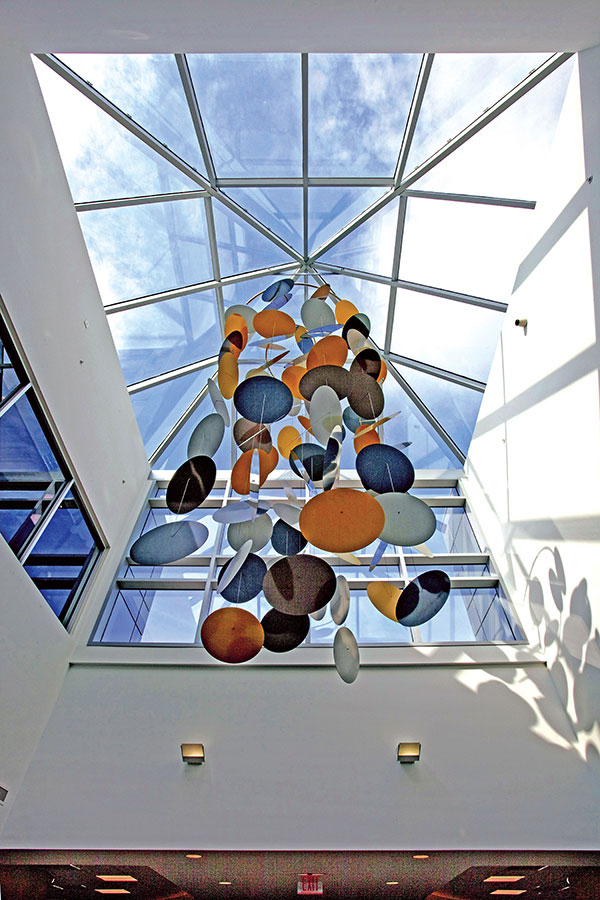 Sounds of wind chimes
Sounds of wind chimes
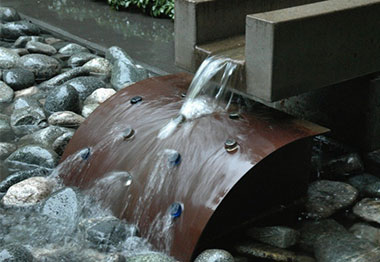 sounds of water
sounds of water
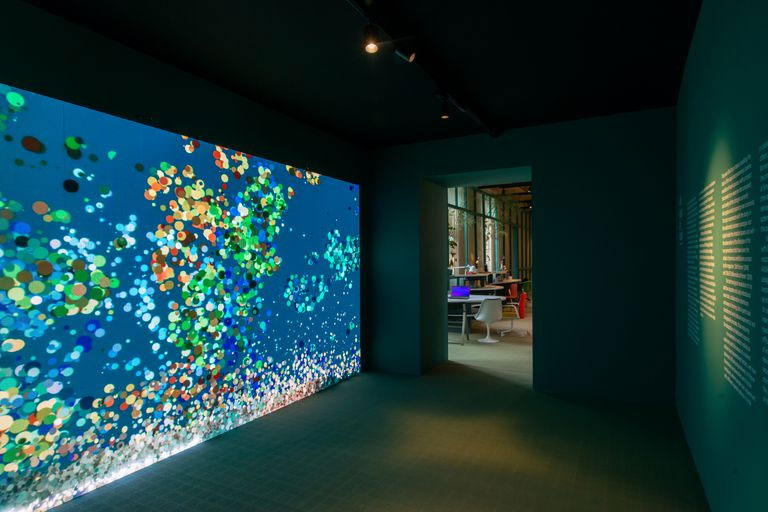 Digital simulations of sounds of nature
Digital simulations of sounds of nature
Disclaimer : This blog is for informational purposes only and we have relied upon various resources for compiling the content, data and visuals contained in it.